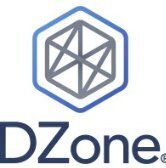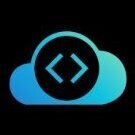Search the Community
Showing results for tags 'top 10'.
-
Microsoft SQL Server is commonly used to manage controls/permissions, backup, recovery, and data migration — but it may not be the best option for you. Through this blog post, we will be listing out the top 10 SQL Server alternatives for you to consider while investigating the best fit. Whatever might be the reason for […]View the full article
-
- top 10
- sql server
-
(and 2 more)
Tagged with:
-
Horizons of creativity are now open to define new approaches for the implementation and understanding of DevOps methods and technologies. Moreover, organizations and IT teams expect an investment boost in methods, architecture, and tools. This improvement can help the evolution from IT tools into digital products, which have become a vector of growth for organizations. People, with their capabilities to determine and define new ideas focused on business value, are now the distinguishers with their central position. Agile methods historically recommended the involvement of business in all stages of development to ensure that the product bumps into expectations. View the full article
-
Diagrams are a great means for us to connect with information and process its significance; they help in communicating relationships and abstract information and enable ... View the full article
-
- flowchart software
- diagramming software
-
(and 3 more)
Tagged with:
-
Video gaming, introduced in the last century with the earliest example being the ‘Cathode Ray Tube Amusement Device‘ developed in 1947 by Thomas T. Goldsmith ... View the full article
-
A Linux administrator’s task is to typically install, upgrade, and monitor a company’s software and hardware while maintaining the essential applications and functions which include The post 11 Best GUI Tools for Linux System Administrators in 2023 first appeared on Tecmint: Linux Howtos, Tutorials & Guides. View the full article
-
What is Release? A release represents a number of activities in a certain time period, with people working on them What is release management? Release management is the process of managing, planning, scheduling and controlling a software build through different stages and environments; it includes testing and deploying software releases. Release management is chiefly concerned with how changes flow through any pre-production environments. Release Management is all about enabling an organization’s systems and services to change to support evolving business needs. It is the process of coordinating the movement of project into production environments where they can be consumed by end-users. It helps organizations perform in a more efficient and timely manner by releasing updates to production more often and increasing the quality of those releases. The top 10 release management tools in 2024, based on popularity, user reviews, and features, are: Octopus Deploy Jira Service Management Spinnaker Azure Pipelines ReleaseHub GoCD XebiaLabs ElectricFlow Plutora StackStorm The Release Management Process The release management process flow is fairly straightforward, though it can be broken down into six sub-processes that enable release management to be performed effectively, efficiently and safely to facilitate the flow of changes into the operations environment. Release management support: provides guidelines and support for the deployment of releases including the roles that are involved in other parts of the release and deployment management process Release planning: defines the scope and content of releases according to release management policies, assigns authorized changes into release packages and defines a schedule for building, testing and deploying the release Release build: deals with the actual development of all required release components including the issuance of all necessary work orders and purchase orders for components sourced from vendors and ensuring that all release components are ready for validation and testing Release deployment: manages the deployment of release components into the live production environment and the transition of documentation and training to end-users and operating staff. Early-life (post-release) support: the initial period after the deployment of a new release when the release and deployment management team work with the incident management team to resolve operational issues and remove errors and deficiencies caused by the release. Release closure: formally closing release activities, verifying all documents and records are properly updated and reporting release outcomes and feedback to project teams. What are the benefits of release management? Faster delivery of changes and new features to users. Reduced risk of un-authorized releases breaking features that people are using. Predictable schedule of deployments at times that minimize business impact. Ensuring new or changed services can meet agreed service requirement. Providing proper knowledge transfer to users and support staff. Choosing the best release management tool is tricky because what works best for one development team may not meet another team’s needs. We’ve rounded up five of the best tools that can help many Dev teams streamline their workflow and optimize efficiency to deliver better software, faster. Release Management Cycle Product Release Cycle Info about CMDB Release Manager Role Plutora It is an inexpensive software to get the single source of information on environment management and release management. It helps resolve environment conflicts and enable management to have single source of truth. Plutora improves the speed and quality of application delivery by correlating data from existing tool-chains, coordinating delivery across diverse ecosystem of development methodologies and hybrid test environments, and incorporates test metrics gathered at every step of the delivery pipeline. Features: Intelligent tracking of system and project dependencies inherent in tightly-coupled releases. Integrate with the existing delivery team tools to improve coordination of diverse teams. Clever system impact matrix with regression-test flagging. Centralized planning and release orchestration creates efficient, predictable continuous delivery pipelines. XL Release XL Release is an end to end tool that helps pipeline orchestration for Continuous Delivery and DevOps teams. The tool acts as a workflow manager for the marketing, documentation, project management, and deployment scripts that combine to release a new major version. It can be sometimes used for minor releases but only if there is cross-team coordination. Features Provides ways and means to identify the manual steps where it is taking a long time or requires more manual intervention through its reporting features. Reduces the number of manual steps involved in the overall release process as such. It improves the efficiency of releases through automation and standardization. This tool will also help in moving towards a fully automated delivery pipeline, thereby enabling more fine-grained releases. This tool will implement the transformation from a manual process to a fully automated release process at the earliest. Bamboo Atlassian’s Bamboo is a continuous integration server that automates release management for applications and general software, allowing teams to establish a streamlined pipeline of build delivery. It ties automated builds, testing, and releases into an integrated workflow. Features: Language agnostic integration with many platforms Dedicated agents focus on specific build projects Full reporting of upcoming code changes and issues UrbanCode Deploy IBM’s UrbanCode Deploy is an application release automation tool that automates software deployment to local and cloud-based environments. The software allows seamless deployments to distributed data centers, cloud, and virtualized environments as often as needed — on demand or on schedule. Features: Automated deployments Processes can be built by drag-and-drop interface Enterprise level security and scalability CA Release Automation CA Release Automation is yet another tool that is used for Release Management which handle DevOps projects. It is an enterprise-class, continuous delivery (CD) solution that helps in automating complex, multi-tier release deployments. It is a dynamic application deployment tool which helps in regulating the application delivery across the enterprises. Features It provides by far the best process designer or flow designer when compared with the other automation tools. Provides better visibility, consistency, and reliability thereby reducing production errors. It provides and harnesses enterprise scalability. Provides deploy speeds of applications to about 20 times faster. GoCD GoCD is an open source continuous delivery server created by ThoughtWorks. GoCD offers businesses a first-class build and deployment engine for complete control and visibility. It was designed for continuous delivery and the concepts essential to this practice are built in at the core. Enterprise add-ons and professional support available from ThoughtWorks Features- Supports parallel and sequential execution. Dependencies can be easily configured. Deploy any version, anytime Visualize end to end workflow in realtime with Value Stream Map. Deploy to production securely. Handle user authentication and authorization Keep orderly configuration Tons of plugins to enhance functionality. Active community for help and support. XL Deploy XebiaLabs Deploy is a comprehensive application release automation solution. It is agentless across all target platforms, meaning that you can easily configure firewalls and security appliances, routers, mobile devices, and all the target systems you would normally have to install a proprietary agent to reach. Features- Using XL Deploy means you don’t need to write deployment commands or scripts. XL Deploy keeps a version history of items such as deployment packages, environments, and dictionaries, so you won’t lose anything. Integration with existing tech stack and complete infra as code. You can customize the tool as per your need. XL Deploy offers a variety of reports so you can audit your deployment activities. Octopus Deploy Octopus Deploy is a tool that can automate deployment for .NET applications. It comes with much of ease from the installation time itself, letting you choose to install on a server or on an Azure instance. Octopus Deploy further works along with your build servers to provide reliable, secure and automated releases of your .NET applications into various environments of your software development (be it Testing, Staging, UAT or Production environments) and be it on-premise or cloud environments. Features- Offers repeatable & reliable deployments Complex deployments made easy. Octopus can promote release between environments. Offers world-class platform support like ASP.NET, Node.js, Java and many other scripting languages, and platform Provides seamless integration abilities with other platforms as well. Provides audit information of all your past deployments which can further help in yearly audits for certificates and regulation. Azure Pipeline Microsoft Azure DevOps is a toolset to deliver your software in a compliant and secure way to an on-premises or cloud environment. In order to automate software testing and deployment, developers and DevOps build CI/CD pipelines or build/release pipelines that automate much of this activity. A pipeline allows developers, DevOps teams and others to produce and deploy reliable code. In the Microsoft domain, the way to build a pipeline is with Azure DevOps with a feature called Azure Pipelines. The Azure pipeline has a lot of capabilities such as continuous integration and continuous delivery to regularly and consistently test and builds our code and ship to any target. Azure Pipelines help your team continuously deliver software to your customers at a faster pace and with lower risk. You can fully automate the testing and delivery of your software in multiple stages all the way to production, or set up semi-automated processes with approvals and on-demand deployments. For details visit- Microsoft.com Features- One of the best feature in Azure Pipelines is it’s native container support. It also supports multiple source code and version control repos. It has cloud hosted agent support to major and popular OS like Windows, MacOS, Linux or Ubuntu. AWS DevOps Pipeline It is the latest method of creating and deploying software, plus it has brought a cultural shift in companies as well, which has led to the introduction of an agile approach in the software development life cycle. During the process code is taken in one end and is deployed on other ends after going through different processes. CodePipeline automates the build, test, and deploy phases of your release process every time there is a code change, based on the release model you define. Read more in details at Amazon.com Jira with Agile Release Management- Jira has several powerful features for release management, including agile release cycles. Out of the box, a Jira workflow doesn’t include release management information. But since the Jira platform is completely flexible, you can add more statuses to track which issues are included in a specific release. Jira software enable teams to bring versions from multiple projects onto a single Release board and define custom versions workflow, matching it to Releases/Unreleased statuses. For detalied explanation of workflow. Click here. Gitlab Pipelines GitLab CI/CD (Continuous Delivery) service is a part of GitLab that build and test the software whenever developer pushes code to application. GitLab CD (Continuous Deployment) is a software service that places the changes of every code in the production which results in every day deployment of production. For a successful DevOps team, automation is very essential and CI/CD pipelines play a huge role in achieving that goal. A CI/CD pipeline automates steps in the SDLC like builds, tests, and deployments. Why use Gitlab CI/CD? It is easy to learn, use and scalable. It is faster system which can be used for code deployment and development. You can execute the jobs faster by setting up your own runner (it is an application that processes the builds) with all dependencies which are pre-installed. GitLab CI solutions are economical and secure which are very flexible in costs as much as machine used to run it. It allows the project team members to integrate their work daily, so that the integration errors can be identified easily by an automated build. See GitLab YAML reference for more details. Reference XL releas IBM UrbanCode release IBM UrbanCode Velocity Atlassian Jira Digital.ai release Conclusion In this blog tutorial, we have tried to understand the process of Release Management also along with that, we have tried to understand the advantages that it brings to the table when it is introduced into the DevOps pipeline. We have gone through various products and also the features that these tools bring when introduced into your Organizational DevOps pipelines. Hope you have got all the required information that you were looking for in this article. The post Top 10 Release Management Tools in 2024 appeared first on DevOpsSchool.com. View the full article
-
As the name suggests, Linux Window Managers are responsible for coordinating how application windows work. They run quietly in the background of your operating system, The post 13 Best Tiling Window Managers for Linux in 2023 first appeared on Tecmint: Linux Howtos, Tutorials & Guides. View the full article
-
Notepadd++ is a completely free source code editor created as a replacement for Notepad on Windows – is written based on Scintilla in C++ and The post 12 Best Notepad++ Alternatives for Linux in 2023 first appeared on Tecmint: Linux Howtos, Tutorials & Guides. View the full article
-
Linux is an open-source operating system widely used in servers, supercomputers, and embedded systems. One of the key benefits of Linux is the availability of a vast range of free and open-source software applications. From web browsers to programming tools and multimedia applications, the Linux software ecosystem has much to offer for users of all levels of expertise. This article lists the 10 BEST Linux applications in 2023 for the desktop version of Ubuntu. We’ll examine what each application does and what makes it a great Linux application... View the full article
-
For a long time, Windows has been the preferred platform for gaming, and this is largely due to its affordability, flexibility, perfect driver support, and The post 10 Best Linux Gaming Distributions That You Should Give a Try first appeared on Tecmint: Linux Howtos, Tutorials & Guides. View the full article
-
Rivals C# and Java are poised to switch places as the fourth and fifth most popular programming languages. View the full article
-
- programming
- development
-
(and 2 more)
Tagged with:
-
After years of stagnation, the Open Web Application Security Project (OWASP) Top 10 list finally saw some shakeup. Most notably, insecure design debuted on the list as the number four security risk to web applications. “If we genuinely want to ‘move left’ as an industry, it calls for more use of threat modeling, secure design […] The post The Everything-As-Code Revolution and the OWASP Top 10 appeared first on DevOps.com. View the full article
-
- everything-as-code
- owasp top 10
-
(and 1 more)
Tagged with:
-
The tools, languages, platforms, and methods used to build applications have changed drastically over the past decade. Application security practices have to change with them; otherwise, security professionals will be playing constant catch-up with attackers and cybercriminals. What Is the OWASP API Top 10? The increase of microservices and application programming interfaces (APIs) has given […] The post Use the OWASP API Top 10 to Secure Your APIs appeared first on DevOps.com. View the full article
-
- owasp api top 10
- owasp api
-
(and 1 more)
Tagged with:
-
The practice of data science requires the use of machine learning frameworks extensively. Now, this could be for many reasons but largely to automate their processes that drive their business forward. Framework focused solutions mean data scientists don’t always need to have extensive experience in coding and programming languages, and can instead use their expertise in solving bigger problems on their table. Reports show that 85% of data pros have used at least one ML framework... View the full article
-
- data science
- top 10
-
(and 2 more)
Tagged with:
-
Forum Statistics
73.3k
Total Topics71.2k
Total Posts
.png.6dd3056f38e93712a18d153891e8e0fc.png.1dbd1e5f05de09e66333e631e3342b83.png.933f4dc78ef5a5d2971934bd41ead8a1.png)







